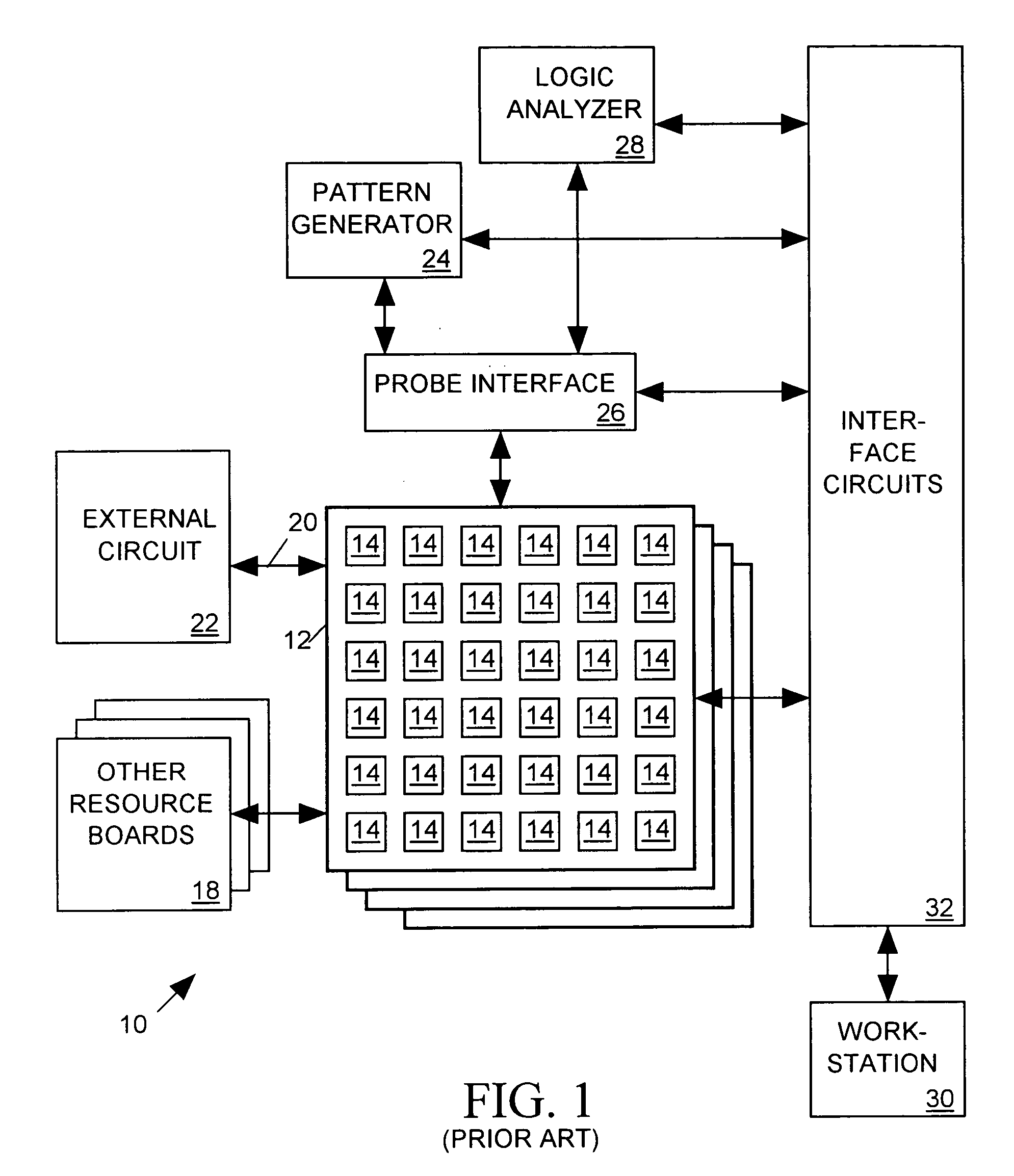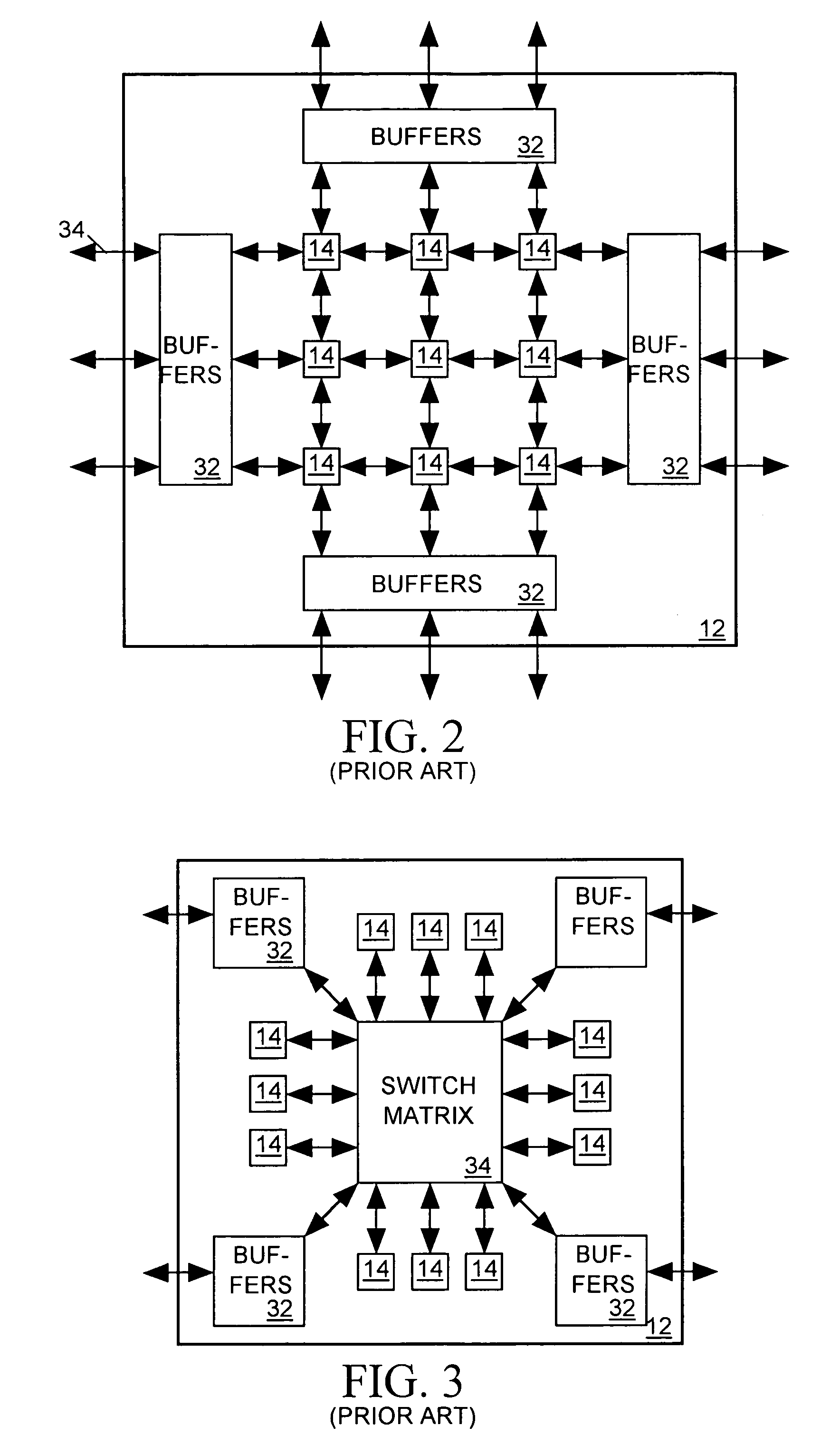Resource board for emulation system
a technology of emulation system and resource board, which is applied in the direction of error detection/correction, program control, instruments, etc., can solve the problems of not providing any assurance that the new and old portions of the design will work properly together, requiring a lot of processing time to simulate ic behavior, and the hard-wired approach to fpga interconnection is relatively inexpensive, and not very flexibl
- Summary
- Abstract
- Description
- Claims
- Application Information
AI Technical Summary
Benefits of technology
Problems solved by technology
Method used
Image
Examples
Embodiment Construction
[0031]The present invention relates to a network-based emulation system using various programmable resources to emulate the behavior of an IC to determine how signals an IC produces would behave in response to test signals applied as inputs to the IC. The invention relates in particular to a circuit board employed by the emulation system for holding emulation resources, for providing programming and data signal paths to the resources, and for providing some test functions needed during a circuit emulation. While the specification below and the accompanying drawings depict an example embodiment of an emulation resource board considered to be a best mode of practicing the invention, those of skill in the art will appreciate that the invention may be practiced in other ways. The claims appended to this specification therefore apply not only to the example embodiment described below but to any embodiment of the invention including elements or steps that may be functional equivalents of ...
PUM
 Login to View More
Login to View More Abstract
Description
Claims
Application Information
 Login to View More
Login to View More - R&D
- Intellectual Property
- Life Sciences
- Materials
- Tech Scout
- Unparalleled Data Quality
- Higher Quality Content
- 60% Fewer Hallucinations
Browse by: Latest US Patents, China's latest patents, Technical Efficacy Thesaurus, Application Domain, Technology Topic, Popular Technical Reports.
© 2025 PatSnap. All rights reserved.Legal|Privacy policy|Modern Slavery Act Transparency Statement|Sitemap|About US| Contact US: help@patsnap.com



